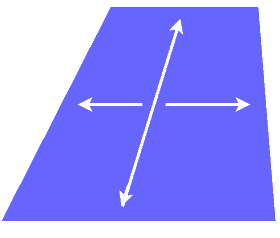

Geometry is divided into two branches: analytic geometry and trigonometry. Seifedine Kadry, in Mathematical Formulas for Industrial and Mechanical Engineering, 2014 Berry curvature generation detected by Nernst responses in ferroelectric Weyl semimetal. The other perpendicular to the a-axis is broken by the applied magnetic fields B whenever B is away from the a-axis. The one perpendicular to the b-axis is broken by the ferroelectricity developing predominantly along b-axis. Here, in order to observe the finite Hall signals, both mirror planes perpendicular to the a-axis and b-axis should be broken. Large ANE signals originating from the Berry curvature of Weyl nodes are observed. By contrast, panels in the bottom row show the responses for the sample with broken inversion symmetry lying in the WSM phase. No ANE signals (Berry curvature) are observed, because no Weyl nodes exist in the system. Panels in the top row are the responses for the sample with preserved inversion symmetry which lies in the insulating phase. Angular dependence of Berry curvature in In-PbSnTe system revealed by the Nernst measurements. The other mirror plane perpendicular to a-axis is also broken whenever H is directed away from a-axis, generating finite amount of Berry curvature, as exactly shown in Fig. SHG reveals that polarization develops predominantly along b-axis, breaking one of the relevant mirror planes.

From symmetry consideration, in order to generate finite Berry curvature, both mirror planes must be broken.

Here, the key ingredient is the two mirror planes perpendicular to the a-axis and b-axis. Once the polar distortion is turned “ON” for S36, the Weyl nodes redistribute and generate the Berry curvature as the magnetic fields are applied. The comparison of S33 and S36 immediately shows that the Weyl nodes are turned “ON” (S36) and “OFF” (S33) by adjusting the strength of polar distortion of ferroelectricity. Having rigorously confirmed the effect of Berry curvature in the indium doped Pb 1− xSn x Te system via measurements in the in- plane geometry, full-field rotation Nernst measurements are performed to see the effect of Berry curvature with respect to the applied magnetic fields along other directions, with the results shown for the two typical samples S33 (nonpolar and inversion symmetry preserved) and S36 (polar and inversion symmetry broken). In terms of these equations (1) and (2) become The total derivatives, representing parcel accelerations, involve partial derivatives that express temporal and advective changes experienced by an air parcel. Only one actual force, that of pressure (directed from high to low values), is considered. Equations (1) and (2) express Newton's second law of motion, for an individual fluid element, or air parcel, with accelerations per unit mass equal to applied forces per unit mass. The terms − fv and fu are components of the Coriolis acceleration, whereas du/ dt and dv/ dt are material accelerations in the x and y directions, as measured in the rotating reference frame. The pressure is p, and the density ρ is constant due to the assumption of incompressibility and homogeneity. Here, t is time, u the velocity in the x direction (positive toward the east), and v the velocity in the y direction (positive toward the north). Where d u d t and d v d t describe the material acceleration-that experienced by an individual fluid element.


 0 kommentar(er)
0 kommentar(er)
